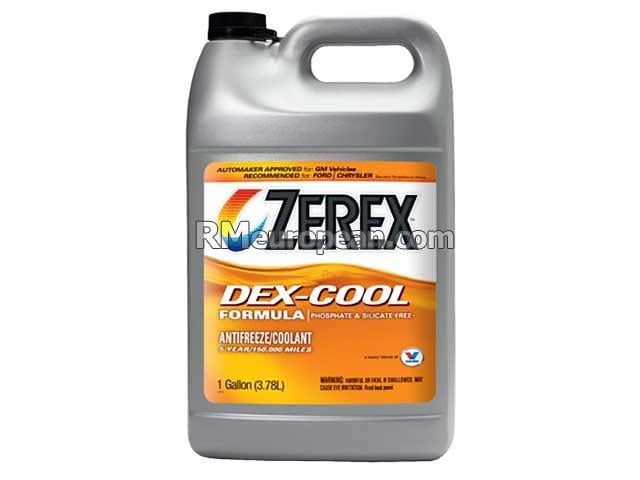
Overall, numerous cooling system problems have been attributed to the use of this controversial product, although GM firmly stands behind it. Rust builds up in the system, inhibiting coolant flow, which causes overheating. The acid eats away at head gaskets and intake gaskets.

Cooling systems that use Dexcool exhibit more acid buildup and rust in the system when the coolant level gets low and oxygen is allowed to enter the system. It's supposed to last 5 years or 150,000 miles, but there have been problems with this coolant. In the 1990s, GM introduced an engine coolant called Dexcool. GM suggests flushing Dexcool for the first time at 150,000 miles. If I have Dexcool in my car, can I leave it in for the life of the car? Head gaskets blow, heads warp, and the engine suffers major damage. The water pump overheats and fails due to a lack of lubricant in the coolant. The coolant stops flowing through the system, clogs up coolant passageways and water jackets, radiators, and heater cores. The coolants chemically react and form a gel rather than a liquid. What exactly happens when these coolants are mixed? To guard against major engine failure, read on. There are some coolants that claim compatibility with Dexcool, but I would rather err conservatively and add what the system is supposed to take rather than gamble.

When mixed together they form a gel-like substance that stops coolant flow, and consequently, the engine overheats. The green and orange coolants do not mix. This is one of those questions usually asked after the fact, and usually engine damage has already occurred. Can I mix green coolant with orange coolant? What is coolant?Ĭoolant (sometimes referred to as antifreeze or radiator fluid) is used to regulate your engine temperature and prevent it from overheating.

And in mixing any antifreeze with water for a 50/50 mix, the use of distilled water is highly recommended. On GM's own consumer site, the debate regarding its Dexcool antifreeze continues. €¢ debris (particles) floating in the coolant.įurther inspection by the technician may find corrosion in the system.Editor's Note: This article was originally posted in 2009. €¢ accelerated corrosion within the engine and cooling systems.
DODGE CHARGER DEXCOOL COOLANT MANUAL
For heavy duty truck and extreme duty cycleĪpplications refer to the Service Information or Owner's Manual for proper maintenanceĬAUTION: Vehicle Damage may occur if dissimilar coolants are mixed!Ĭoolants of different technologies are not compatible nor interchangeable (OAT, HOAT or Service interval of 10 years or 150,000 miles. This new coolant is an Organic Additive Technology (OAT) ( Vehicles and beyond, for all engine applications except the ones listed in the note above.

has released a new engine coolant for the 2013 model year
DODGE CHARGER DEXCOOL COOLANT CODE
NOTE: This bulletins applies to all vehicle listed above for every engine applicationĮXCEPT the 2013 MK equipped with the 2.2L Diesel engine (sales code ENE)Īnd the JC vehicle equipped with the 2.0L Diesel engine (sales code EBT).Ĭhrysler Corporation LLC. We've had this discussion prior, it ended in a locked thread my warning is valid.Īttention! Release Of New Engine Coolant Organic Additive Technology (OAT)Ģ013 (DP) Ram Truck (4500 / 5500 Chassis Cab) During the PBI prior to delivery of the vehicles, even topping off the coolant overflow tank with a small amount OAT when a vehicle called for HOAT, or vice versa causes problems. Even if you flush the cooling system, if there is a little of the HOAT remaining it will cause problems, in fact Chrysler has issued TSB's warning their techs about this. G-05 is HOAT they will not mix w/o causing a problem. Mixing G-05 with OAT is a formula for disaster. The OPs cooling system calls for OAT coolant. I am 99.44% sure it is fully compatible with the original pink coolant. Zerex G-05 by Valvoline is a HOAT that I use in my Mopar built VW Routan.


 0 kommentar(er)
0 kommentar(er)
